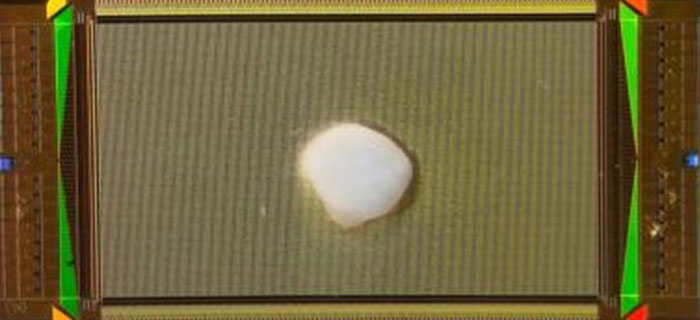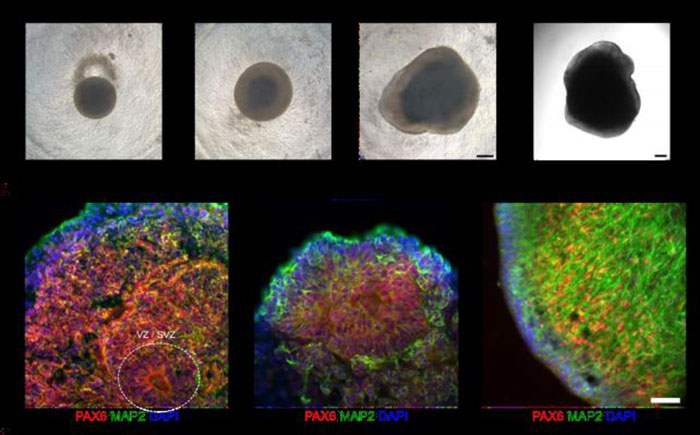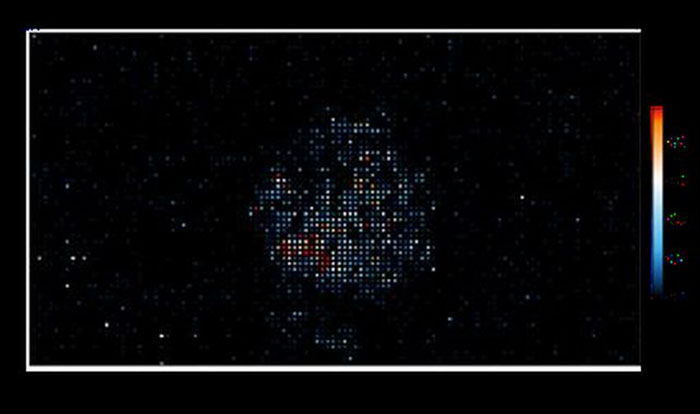As surprising as it may sound, our brains process information quicker than any computer could ever do.
That’s because of our neurons’ ability to both serve as a processor and memory device, as opposed to the physically separated items needed in the majority of modern computing devices.
After many tries, new efforts may have successfully made computing more brain-like by integrating real human brain tissue with electronics in a process called Brainoware.
A team led by engineer Feng Guo of Indiana University Bloomington fed it tasks like speech recognition and math problems such as nonlinear equation prediction.
New efforts may have successfully made computing more brain-like by integrating real, actual, human brain tissue with electronics in a process called Brainoware

Image credits: linkedin
As reported by Science Alert, the computing system was slightly less accurate than a pure hardware computer running on artificial intelligence. Still, the research has revealed an important first step in a new kind of computer architecture.
Several researchers from Johns Hopkins University reportedly noted in a related Nature Electronics commentary the importance of keeping ethical considerations in mind while expanding this technology further.
Lena Smirnova, Brian Caffo, and Erik C. Johnson, who weren’t involved with the study, warned: “As the sophistication of these organoid systems increases, it is critical for the community to examine the myriad of neuroethical issues that surround biocomputing systems incorporating human neural tissue.”

Image credits: Nature Electronics
The human brain contains an estimated 86 billion neurons on average and up to a quadrillion synapses.
Additionally, each neuron is connected to up to 10,000 other neurons, constantly firing and communicating with each other.
To date, our best effort to simulate the activity of the brain in an artificial system barely scratched the surface, Science Alert reported.
In 2013, Riken’s K Computer, one of the world’s most powerful supercomputers at the time, tried to mimic the brain with its 82,944 processors and a petabyte of main memory.
It reportedly took 40 minutes to simulate one second of the activity of 1.73 billion neurons connected by 10.4 trillion synapses – around just one to two percent of the brain.
Brainoware is slightly less accurate than a pure hardware computer running on artificial intelligence

Image credits: Nature Electronics
More recently, scientists and engineers have been trying to approach the capacities of the brain by creating hardware and algorithms that mimic its structure and the way it works.
Known as neuromorphic computing, it is improving, but it’s energy-intensive, and training artificial neural networks is time-consuming, as per Science Alert.
Feng and his team reportedly sought a different approach using real human brain tissue grown in a lab.
As per the publication, human pluripotent stem cells were coaxed into developing into different types of brain cells that were organized into three-dimensional mini-brains called organoids, complete with connections and structures.
A team led by engineer Feng Guo of Indiana University Bloomington fed the “biocomputer” tasks like speech recognition and math problems

Image credits: Nature Electronics
These “mini-brains” aren’t the same as real human brains and, therefore, cannot develop real emotions or a sense of consciousness.
Brainoware consists of these brain organoids connected to many high-density microelectrodes, using a type of artificial neural network known as reservoir computing.
Electrical stimulation transports information into the organoid, the reservoir wherein that information is processed before Brainoware spits out its calculations in the form of neural activity, the publication reported.
The researchers handed 240 audio clips from eight male speakers making Japanese vowel sounds to Brainoware and asked it to identify one specific individual’s voice to test the system.
After training for just two days, Brainoware was reportedly able to identify the speaker with 78 percent accuracy.
The research has revealed an important first step in a new kind of computer architecture

Image credits: Nature Electronics
The researchers also asked Brainoware to predict a Hénon map, a dynamic system that exhibits chaotic behavior, before leaving it unsupervised to learn for four days.
Subsequently, the researchers found that Brainoware was able to predict the map with better accuracy than an artificial neural network without a long-term memory unit.
Feng and his colleagues wrote: “Due to the high plasticity and adaptability of organoids, Brainoware has the flexibility to change and reorganize in response to electrical stimulation, highlighting its ability for adaptive reservoir computing.”
Nevertheless, there are some limitations, including the issue of keeping the organoids alive and healthy, and the peripheral equipment power consumption levels.
Many people were excited by the new research

However, bearing ethical considerations in mind, Brainoware reportedly has implications not just for computing, but understanding the mysteries of the human brain.
Lena and Erik from Johns Hopkins University wrote: “It may be decades before general biocomputing systems can be created, but this research is likely to generate foundational insights into the mechanisms of learning, neural development, and the cognitive implications of neurodegenerative diseases.”
They added: “It could also help to develop preclinical models of cognitive impairment to test new therapeutics.”
Others thought this sounded like the perfect plot for a new episode of Black Mirror

























 English (US) ·
English (US) ·